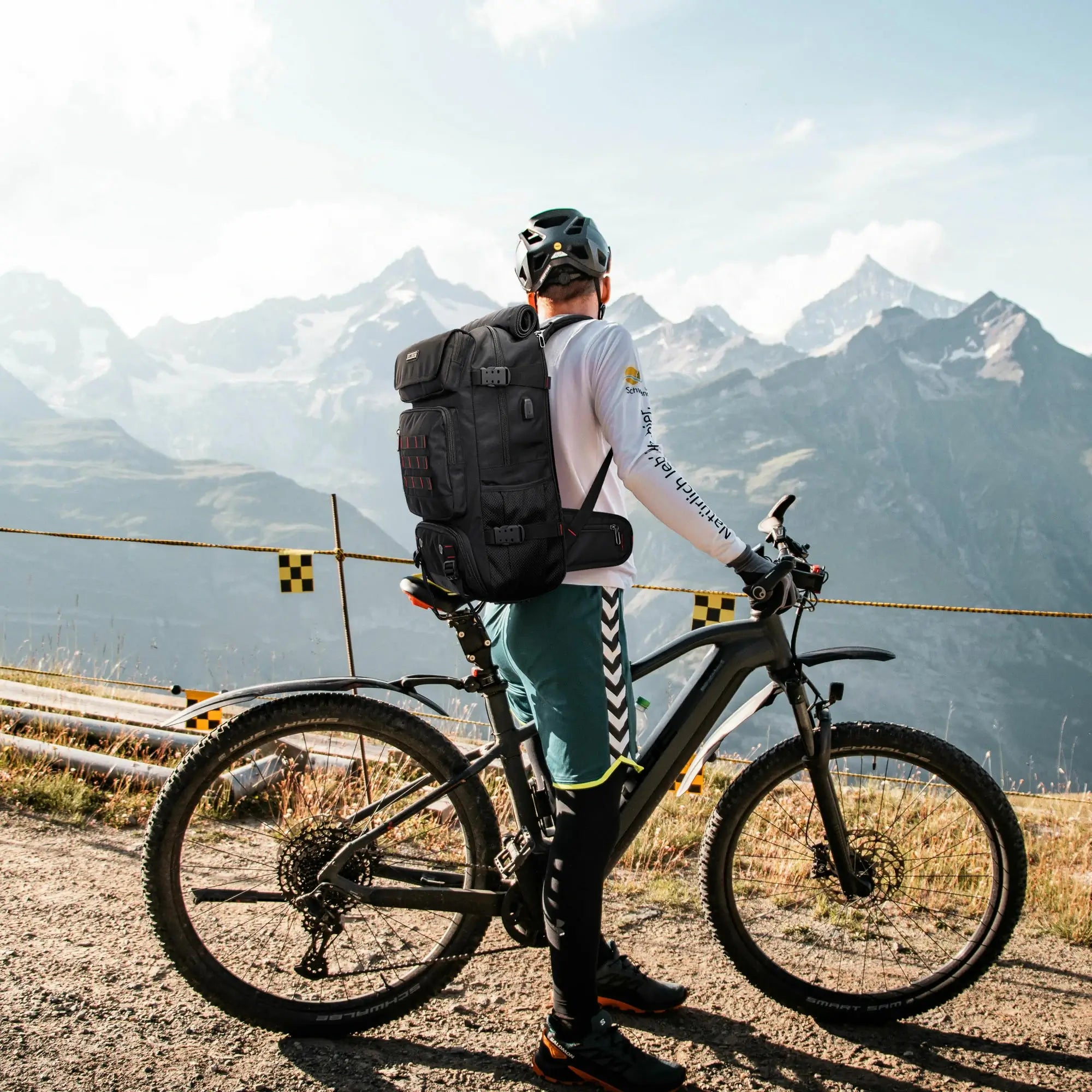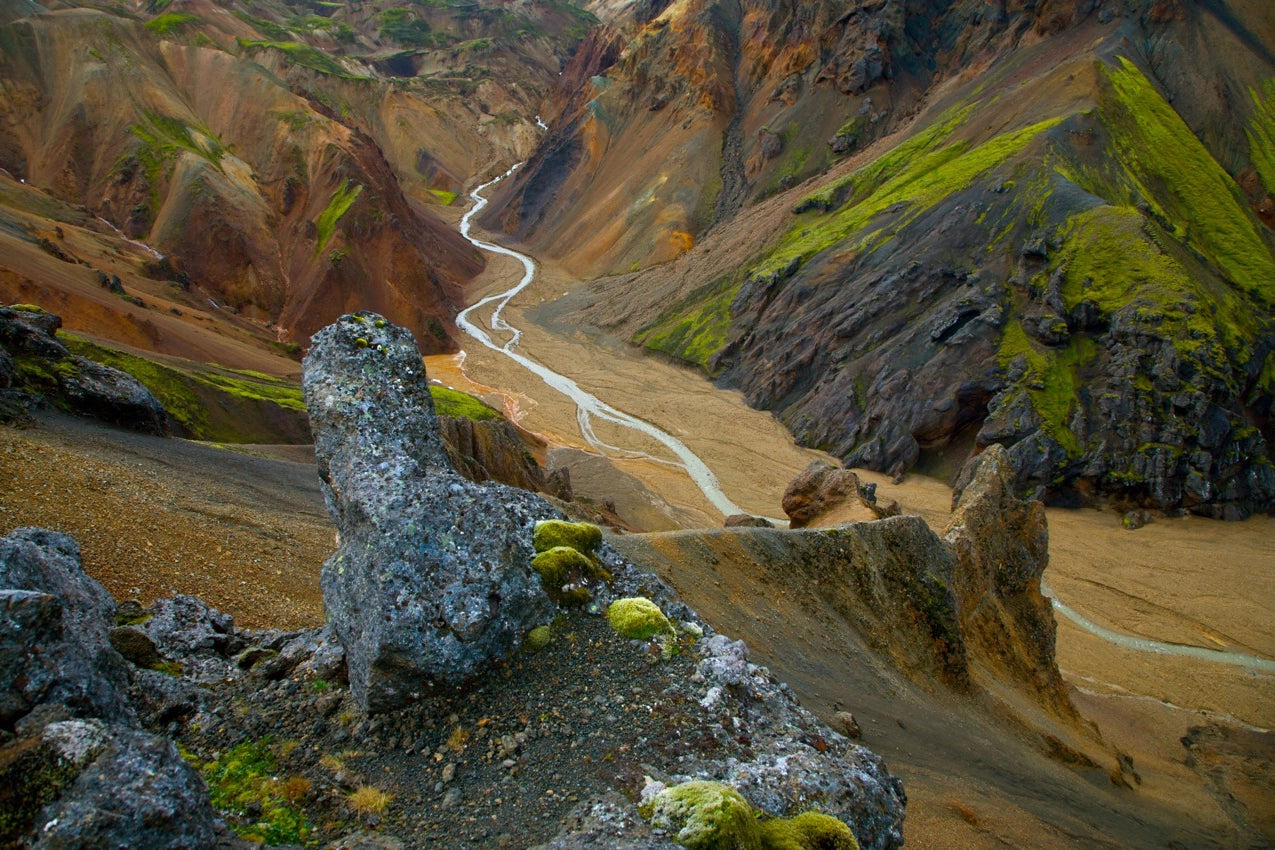Backpacking offers a unique way to explore the world's most breathtaking landscapes, combining the thrill of adventure with the tranquility of nature. Whether you’re seeking spiritual fulfillment, cultural immersion, or simply the joy of the great outdoors, these top 10 backpacking trails around the world offer something for every type of traveler. This guide dives deep into the details of these trails, enriched with authoritative data, recent trends, and expert insights to help you plan your next unforgettable journey.
Section 1: The Classic Trails
1. Camino de Santiago, Spain

Overview: The Camino de Santiago, also known as the Way of St. James, is one of the most famous pilgrimage routes in the world. This network of trails culminates at the Cathedral of Santiago de Compostela in northwestern Spain. The most popular route, the French Way, stretches approximately 800 kilometers (500 miles) from Saint-Jean-Pied-de-Port near the French border to Santiago.
Historical Significance: The Camino has been a significant Christian pilgrimage route since the Middle Ages, attracting pilgrims from all over the world. In recent years, it has seen a resurgence in popularity, with over 300,000 pilgrims completing the journey annually.
Data Insights:
- Growth Trends: According to the Pilgrims' Office, the number of people completing the Camino has increased by 10% annually over the past decade. This growth reflects a broader trend towards slow travel and spiritual tourism (Luxury Ship Living).
- Economic Impact: A study by the University of Santiago de Compostela estimated that the Camino generates approximately €280 million annually for local economies along the route .
Best Time to Visit: April to October, with peak months being May, June, and September.
Cultural Highlights: The route passes through several historic towns and cities, including Pamplona, known for its Running of the Bulls, and León, home to the stunning León Cathedral.
2. Everest Base Camp, Nepal

Overview: The trek to Everest Base Camp is an iconic journey that takes you to the foot of the world's highest mountain. Located at an altitude of 5,364 meters (17,598 feet), the base camp offers stunning views of Mount Everest and the surrounding Himalayas.
Trek Details: The journey typically begins in Lukla, with a trek that spans about 130 kilometers (80 miles) round trip. It takes approximately 12 days to complete, depending on acclimatization needs.
Environmental and Cultural Impact:
- Tourism Statistics: The Everest region attracts around 45,000 trekkers annually. However, the influx of tourists has raised concerns about environmental degradation and overcrowding.
- Local Economy: The trekking industry is a major source of income for the Sherpa community. The average trekker spends around $2,000-$3,000, contributing significantly to the local economy .
Challenges and Considerations: High altitude poses a significant challenge, with trekkers needing to be cautious of altitude sickness. The Nepalese government has introduced regulations to manage the flow of trekkers and reduce environmental impact.
Best Time to Visit: March to May and September to November, avoiding the monsoon season and the harsh winter.
Section 2: Emerging and Lesser-Known Trails
3. Dana to Petra, Jordan

Overview: Often referred to as the "Inca Trail of the Middle East," the Dana to Petra trek is a stunning journey through Jordan's most beautiful landscapes. The trail spans 80 kilometers (50 miles) and typically takes 5 to 7 days to complete.
Scenic and Cultural Highlights:
- Diverse Ecosystems: The trek begins in the Dana Biosphere Reserve, Jordan's largest nature reserve, and ends at the ancient city of Petra, a UNESCO World Heritage site. Along the way, trekkers traverse mountains, deserts, and canyons, offering a diverse range of ecosystems and landscapes.
- Cultural Significance: Petra, known for its rock-cut architecture, was once the capital of the Nabataean Kingdom and is one of the most visited archaeological sites in the world.
Tourism Trends:
- Popularity Growth: National Geographic recently named the Dana to Petra trek as one of the 15 best hikes in the world, contributing to a rise in international trekkers .
- Sustainable Tourism: The Jordanian government has focused on promoting sustainable tourism in the region, with efforts to preserve the natural environment and support local communities through eco-lodges and guided tours.
Best Time to Visit: Spring (March to May) and autumn (September to November) offer the most favorable weather conditions, avoiding the extreme heat of summer and the cold of winter.
4. The Kepler Track, New Zealand

Overview: Located in Fiordland National Park, the Kepler Track is one of New Zealand's "Great Walks." This 60-kilometer (37-mile) loop track takes about four days to complete and offers some of the most dramatic landscapes in the country.
Trek Highlights:
- Natural Beauty: The Kepler Track traverses a variety of terrains, including beech forests, alpine ridges, and glacier-carved valleys. The trail is known for its breathtaking views of the Southern Alps and Fiordland's lakes and rivers.
- Conservation Efforts: The New Zealand Department of Conservation (DOC) manages the trail and has implemented various conservation projects to protect the unique flora and fauna of Fiordland National Park. The trail's popularity helps fund these initiatives, ensuring the preservation of this natural wonder for future generations .
Visitor Insights:
- Trail Usage: The Kepler Track attracts around 15,000 hikers annually, with the majority visiting during the Great Walks season from October to April .
- Accommodation: The DOC provides huts along the trail, which must be booked in advance. These huts offer basic amenities, including bunks, heating, and cooking facilities.
Best Time to Visit: Late October to late April, when the weather is more stable and the trail is fully accessible.
5. Great Ocean Walk, Australia

Overview: The Great Ocean Walk is a 100-kilometer (62-mile) trail that stretches along the southern coast of Victoria, Australia. Starting from Apollo Bay and ending at the iconic Twelve Apostles, this trail offers a stunning coastal experience with diverse landscapes, from rugged cliffs to serene beaches.
Scenic and Cultural Highlights:
- Diverse Landscapes: The trail showcases the best of Australia's coastal scenery, including towering limestone stacks, lush rainforests, and windswept heathlands. Along the way, hikers can encounter native wildlife such as kangaroos, koalas, and various bird species .
- Cultural Significance: The Great Ocean Walk passes through areas of rich Indigenous history, including sites significant to the local Gadubanud people. Interpretative signs along the trail provide insights into the cultural heritage of the region .
Tourism and Environmental Impact:
- Visitor Statistics: The trail attracts around 40,000 visitors annually, with increasing numbers opting for multi-day hikes to fully immerse themselves in the experience .
- Conservation Efforts: Parks Victoria manages the trail, implementing measures to protect the delicate coastal environment. These include boardwalks to prevent erosion, designated campsites to minimize impact, and educational programs to promote responsible hiking .
Best Time to Visit: The trail is best enjoyed from September to May, avoiding the colder winter months when conditions can be more challenging.
Section 3: Trails with Epic Landscapes
6. Torres del Paine W-Route, Chile

Overview: The W-Route in Torres del Paine National Park is one of the most famous treks in South America. This 80-kilometer (50-mile) trail takes hikers through some of the most spectacular landscapes in Patagonia, including the iconic granite peaks, azure lakes, and sprawling glaciers.
Scenic and Cultural Highlights:
- Natural Wonders: The trail is named after the W shape it forms on the map, connecting the Grey Glacier, the French Valley, and the base of the Torres del Paine. Hikers are treated to panoramic views of the Paine massif, along with close encounters with glaciers and the Southern Patagonian Ice Field .
- Flora and Fauna: The park is home to diverse wildlife, including guanacos, pumas, and Andean condors. The vegetation varies from grasslands to forests, offering a rich tapestry of Patagonian ecosystems.
Visitor Insights:
- Trail Popularity: Torres del Paine National Park receives over 250,000 visitors annually, with the W-Route being the most popular trek. To manage the influx of hikers, the park authorities have implemented a reservation system for campsites and refugios (mountain lodges) along the trail .
- Environmental Challenges: The park faces challenges such as trail erosion, waste management, and the impact of climate change on its glaciers. Ongoing conservation efforts aim to mitigate these issues and preserve the park's natural beauty for future generations .
Best Time to Visit: The peak trekking season is from November to March, during the Southern Hemisphere's summer, when the weather is more stable.
7. Leh-Ladakh, India

Overview: Nestled in the Indian Himalayas, the Leh-Ladakh region offers some of the most remote and breathtaking trekking experiences in the world. The Markha Valley Trek, one of the most popular routes, spans approximately 65 kilometers (40 miles) and takes about 8 days to complete.
Scenic and Cultural Highlights:
- High-Altitude Beauty: The trek takes hikers through high-altitude deserts, past ancient Buddhist monasteries, and over challenging mountain passes, including the Kongmaru La at 5,200 meters (17,060 feet). The stark beauty of the landscape, combined with the vibrant culture of the Ladakhi people, makes this trek truly unique .
- Cultural Immersion: The trek offers opportunities to stay in traditional Ladakhi villages and interact with the locals, providing a deep cultural experience. The region is also home to several important Buddhist monasteries, including Hemis, Thiksey, and Alchi .
Tourism Trends and Challenges:
- Visitor Growth: Ladakh has seen a surge in tourism in recent years, driven by both domestic and international travelers. However, this has raised concerns about the impact on the fragile high-altitude environment .
- Environmental Impact: The Indian government, along with local NGOs, has initiated efforts to promote sustainable tourism in the region. These include waste management programs, conservation of water resources, and the promotion of eco-friendly accommodations .
Best Time to Visit: The trekking season runs from June to September, when the weather is warmer and the high mountain passes are accessible.
Section 4: The Hidden Gems
8. Laugavegur Trail, Iceland

Overview: The Laugavegur Trail is a 55-kilometer (34-mile) trek through Iceland's otherworldly landscapes. The trail begins in Landmannalaugar, known for its geothermal hot springs, and ends in Þórsmörk, a lush valley surrounded by glaciers.
Scenic and Cultural Highlights:
- Volcanic Landscapes: The trail takes hikers through a variety of terrains, including rhyolite mountains, black sand deserts, and moss-covered lava fields. The dramatic contrast between these landscapes, shaped by volcanic activity, is a hallmark of the Laugavegur Trail.
- Geothermal Wonders: Along the trail, hikers can soak in natural hot springs, a welcome respite after a long day of trekking. These geothermal features are a testament to Iceland's active volcanic nature .
Visitor Insights:
- Popularity: The Laugavegur Trail is one of Iceland's most popular treks, attracting around 15,000 hikers annually. The trail's popularity has led to the development of well-maintained huts and campsites along the route .
- Environmental Concerns: Iceland's growing tourism industry has put pressure on its natural environments. The Icelandic government has implemented strict regulations to protect sensitive areas along the trail, including limits on the number of visitors and requirements for trail maintenance .
Best Time to Visit: The trail is best hiked from mid-June to early September, when the weather is more favorable and the trail is free of snow.
9. Mount Kilimanjaro, Tanzania

Overview: Mount Kilimanjaro, the highest peak in Africa at 5,895 meters (19,341 feet), is one of the most sought-after trekking destinations in the world. The trek to the summit takes hikers through five distinct climate zones, from tropical rainforest to arctic conditions at the summit.
Scenic and Cultural Highlights:
- Diverse Ecosystems: The trek begins in lush rainforest, home to a variety of wildlife, including colobus monkeys and elephants. As hikers ascend, they pass through moorland, alpine desert, and finally, the icy summit. The dramatic change in scenery is one of the most striking aspects of this trek (The Green Voyage).
- Cultural Significance: Mount Kilimanjaro holds cultural and spiritual importance for the local Chagga people. Trekkers often learn about the mountain's significance through their guides, many of whom are from the local communities .
Tourism Insights:
- Trekker Statistics: Over 35,000 people attempt to summit Kilimanjaro each year. The success rate varies depending on the route chosen, with longer routes allowing for better acclimatization and higher success rates .
- Conservation Efforts: The Kilimanjaro National Park Authority (KINAPA) manages the mountain, with efforts focused on minimizing the environmental impact of trekking. These include waste management programs, reforestation efforts, and initiatives to reduce the carbon footprint of the trekking industry .
Best Time to Visit: The best times to trek Kilimanjaro are during the dry seasons, from January to March and from June to October, when the weather is more stable.
10. Inca Trail, Peru

Cultural Significance:
- Historical Importance: The Inca Trail is a historic route that was used by the ancient Incan civilization to reach the sacred city of Machu Picchu. The trail is part of an extensive network of roads that once connected the vast Inca Empire, stretching across modern-day Peru, Ecuador, Bolivia, Argentina, and Chile. Walking this trail allows trekkers to follow in the footsteps of the Incas, experiencing the same landscapes and sacred sites that were significant to their culture.
- Spiritual Journey: For many, the trek is not just a physical challenge but also a spiritual journey. The trail passes through numerous Incan archaeological sites, including Wiñay Wayna and Intipata, which are imbued with historical and spiritual meaning. The culmination of the trek at the Sun Gate (Inti Punku), overlooking Machu Picchu at sunrise, is considered a deeply moving experience.
Trail Details:
- Route Overview: The Inca Trail spans approximately 43 kilometers (26 miles) and typically takes four days to complete. The trek begins at kilometer 82 near the town of Ollantaytambo and leads through diverse ecosystems, from cloud forests to alpine tundra. The trail involves steep ascents and descents, with the highest point at Dead Woman’s Pass (Warmiwañusqa), which stands at 4,215 meters (13,828 feet) above sea level.
- Challenges: The trail is physically demanding, with a combination of high altitude, uneven terrain, and variable weather conditions. Trekkers must be prepared for cold nights, potentially rainy weather, and the physical exertion of climbing steep passes. However, the rewards are immense, with breathtaking views, unique flora and fauna, and the opportunity to explore well-preserved Incan ruins along the way.
Preservation Efforts:
- Visitor Limits: Due to concerns about environmental degradation and the preservation of the trail's cultural heritage, the Peruvian government has implemented strict regulations on the number of visitors allowed on the Inca Trail. Only 500 permits are issued per day, including guides and porters, to reduce the impact on the trail and its surroundings. These permits often sell out months in advance, particularly during the peak trekking season (May to September).
- UNESCO World Heritage Status: Machu Picchu and the surrounding area, including the Inca Trail, are designated as a UNESCO World Heritage site. This status has helped to protect the trail from overdevelopment and environmental damage. Preservation efforts include regular maintenance of the trail, restoration of archaeological sites, and strict regulations on camping and waste disposal to ensure the long-term sustainability of the trail.
- Community Involvement: The preservation of the Inca Trail is closely linked with the local communities. Many guides, porters, and support staff are from nearby villages, and their involvement in the trekking industry provides both economic benefits and a vested interest in the conservation of their cultural heritage. Sustainable tourism practices are encouraged, with a focus on minimizing environmental impact and supporting local economies.
Data Points:
- Visitor Limits: The Inca Trail permits are capped at 500 per day, which includes trekkers, guides, and porters. This limit is enforced to protect the trail's environment and cultural sites.
- UNESCO World Heritage Status Updates: Machu Picchu and the Inca Trail have been protected under UNESCO World Heritage status since 1983. Regular updates and assessments are conducted to ensure the preservation of the site, with ongoing efforts to manage tourism and mitigate environmental impacts.
Section 5: Planning Your Adventure
Tips for First-Time Backpackers:
- Start Small: For first-time backpackers, it's advisable to begin with shorter, less challenging trails to build experience and confidence. Trails like the Camino de Santiago in Spain or the Kepler Track in New Zealand offer manageable distances with plenty of support along the way.
- Training: Physical preparation is crucial, especially for more strenuous hikes like Mount Kilimanjaro or the Inca Trail. Incorporate regular cardio, strength training, and practice hikes to get your body ready for the demands of the trail.
- Acclimatization: For high-altitude trails such as Everest Base Camp or Leh-Ladakh, proper acclimatization is key to avoiding altitude sickness. Plan your trek with rest days and gradual ascents to allow your body to adjust.
Essential Gear Checklist:
- Backpack: Invest in a comfortable, durable travel backpack with a capacity suitable for the length of your trip (40-70 liters for multi-day hikes).

WITZMAN Travel Backpack For Men Carry on Nylon Duffel Bags 40L
- Footwear: Quality hiking boots with ankle support are essential, as well as moisture-wicking socks to prevent blisters.
- Clothing: Layering is important, especially for trails with varying climates. Pack moisture-wicking base layers, insulating mid-layers, and a waterproof outer shell.
- Navigation Tools: Bring a map, compass, or GPS device to stay on track, even in remote areas.
- First Aid Kit: A well-stocked first aid kit with essentials like bandages, antiseptic wipes, and pain relievers is a must.
- Shelter and Sleeping Gear: Depending on the trail, you may need a lightweight tent, sleeping bag, and sleeping pad. Ensure your gear is appropriate for the weather conditions you'll encounter.
Safety Considerations:
- Stay Informed: Research the trail conditions, weather forecasts, and any potential hazards before setting out. Trails like Torres del Paine in Chile can have rapidly changing weather, so preparedness is crucial.
- Hydration and Nutrition: Carry enough water and high-energy snacks to sustain you throughout the hike. Water purification tablets or a portable filter are also advisable for longer treks.
- Permits and Regulations: Some trails, like the Inca Trail in Peru, require permits and have strict regulations to preserve the environment. Ensure you have all necessary documentation and understand the rules before you go.
- Communication: For remote trails, consider carrying a satellite phone or emergency beacon. Always let someone know your itinerary and expected return time.
- Respect Wildlife: Maintain a safe distance from wildlife and follow Leave No Trace principles to minimize your impact on the environment.
Conclusion
Recap: The world offers a diverse array of backpacking trails, each providing unique experiences—from the cultural richness of the Camino de Santiago to the breathtaking landscapes of the Torres del Paine. Whether you're a novice or an experienced trekker, these trails promise adventure, personal growth, and a deep connection with nature.
Call to Action: As you plan your next backpacking adventure, remember to tread lightly and respect the natural environments and cultures you encounter. By embracing sustainable travel practices and choosing eco-friendly gear, you can help preserve these trails for future generations. So, pack your bags, lace up your boots, and embark on a journey that will not only challenge you but also leave a lasting impact on your soul.




Share:
Caring for Your Backpack: Maintenance Tips to Make It Last
Travel Safety: Securing Your Backpack and Belongings